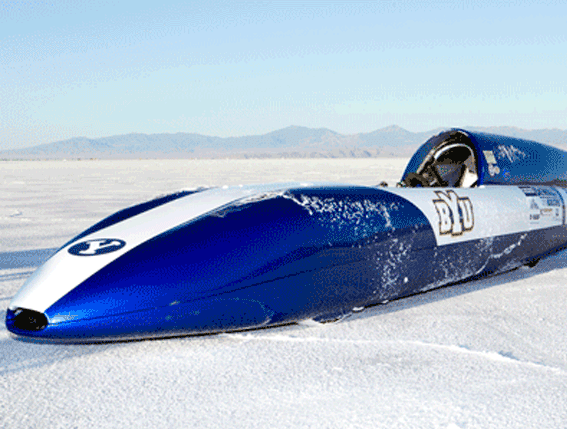
The FIA E-1 class racecar developed by Brigham Young University to set a world speed record for Electric Vehicles
Abstract
A FIA E-1 class racecar was being developed by Brigham Young University to set a world speed record for Electric Vehicles. The car is designed to race on the ultra-flat Salt Flats in Bonneville, Utah. The racecar weighs less than 500kg so increasing the downforce was critical. Reducing aerodynamic drag was also critical due to the power requirements of the racecar.
The surface of the streamliner needed to be shaped over a defined frame. The front end and the under-carriage needed to be designed so that its aerodynamic would generate low drag force with the needed down force. The first was beneficial in achieving the top-speed record, the second was necessary to keep the vehicle down to the ground whilst not compromising the safety and traction.
Optimal Solutions Sculptor's morphing technology was applied over a Computational Fluid Dynamic (CFD) model of the vehicle, to define its optimal external skin surface. The original mesh was read into Sculptor, and the model was prepared for morphing.
Using Arbitrary Shape Deformation Volumes, different configurations were instantly tested, without the need of re-creating the mesh. By moving the control points, new configurations were created immediately and then submitted to CFD until the configuration giving the best results was chosen.

